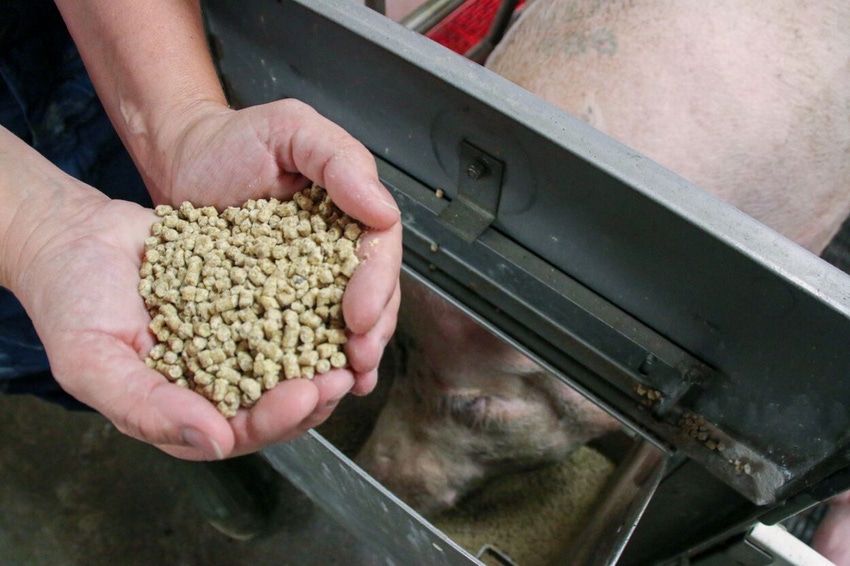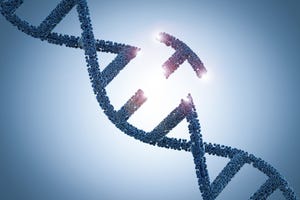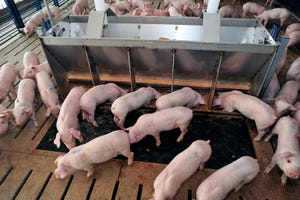Optimizing nitrogen utilization for sustainable pork production
Challenges, opportunities and open questions.
August 10, 2023

By Pedro E. Urriola, Gerald C. Shurson and Lee J. Johnston, University of Minnesota
Optimizing pig performance while minimizing negative environmental impacts of pork production has always been a goal of swine nutrition and focused on reducing nitrogen and phosphorus excretion in manure while meeting nutrient requirements. However, the urgency and severity of inaction for improving nitrogen and phosphorus utilization efficiency globally, has led to severe disruption of the balance of the Earth’ nitrogen and phosphorus cycle [1].
Over time, the composition of nitrogen in the environment has changed and resulted in increased levels of reactive nitrogen gases such as nitrous oxide, which is a greenhouse gas with about 10 times greater potency than methane and about 300 times greater global warming effects than carbon dioxide. In addition, nitrogen oxides and ammonia cause ocean and freshwater lakes and river acidification and eutrophication with negative consequences on biodiversity.
Therefore, it is imperative that we improve strategies to decrease nitrogen pollution and increase nitrogen use efficiency. To understand the challenges and opportunities to improve NUE in pork production, Shurson and Kerr (2023) provided a review and companion interview to set the stage for future action [2]. In this review, the impacts of several potential biological interventions such as genetic selection for NUE, taking advantage of sex differences, appropriate market weight, and use of metabolic modifiers were described.
The impact of various feed formulation and feeding practices such as precise estimates and increasing amino acid digestibility and bioavailability of ingredients, the importance of dietary amino acid balance, feeding low protein diets supplemented with crystalline amino acids, nutritional and non-nutritional feed additives, use of food waste, feed processing, and minimizing feed wastage in swine facilities all play an important role in overall NUE of pig production systems.
However, there are many ways to think about NUE and its measurement in pig production. Traditionally, we have used metabolic crates to collect feces and urine from pigs to determine nitrogen balance calculated from dietary protein intake, retention and excretion in manure. Although this is a useful approach, the purpose of pork production is to produce high quality protein (amino acids) for human consumption.
Therefore, a potentially more accurate measurement of NUE should incorporate environmental impact factors along with nutritional benefits obtained from the production of meat. The NUE can also be estimated as kilograms of pork produced per unit of standardized ileal digestible lysine provided in pig diets [3]. This calculation is useful to describe NUE at the individual (or average) animal level, but pigs are fed in groups with significant variation in their NUE.
In addition, pig health and environmental conditions may affect productivity. Therefore, considering a system wide and mass balance approach may be necessary to have a more accurate estimate of NUE of pork production systems as described in another recent study just published by our University of Minnesota environmental sustainability team [4].
The inefficiency of using nitrogen for pork production is limited in part by our understanding of the utilization of dietary amino acids for various metabolic processes. The inefficiency of nitrogen utilization is low because the efficiency of using dietary amino acids for productive purposes is also relatively low.
Utilization of lysine is used as the standard reference because it is typically the first limiting amino acid (most likely to be deficient) in most diets fed to pigs [5]. Because the marginal efficiency of using standardized ileal digestible lysine for protein deposition is greater for 45 lb pigs (68%) than 265 lb (59%), marketing pigs at heavier weights, which is common practice today, decreases NUE [2].
Improving the efficiency of dietary SID lysine utilization for lean tissue growth is needed but it will require research to gain a better mechanistic understanding of the processes associated with utilization including inevitable amino acid catabolism, protein and energy interactions, and preferential amino acid catabolism. Among all these processes, finding ways to minimize the inevitable catabolism of lysine could have a big impact on NUE because it represents about 15 - 30% [6] of lysine that is lost for protein synthesis and forces catabolism of the remaining amino acids resulting in an overall decrease in NUE (Table 1).
University of Minnesota
Although there is a lot more to learn about opportunities to enhance NUE through these digestive and metabolic efficiencies of dietary amino acids in pigs, there are additional opportunities for improvements involving soil-crops-pig-manure interactions at the farm level. Current research at the University of Minnesota involving green ammonia production, perennial and winter annual cover crops cultivation, and the establishment of a manure composition database are a few of the technologies that will further enhance NUE at the farm level. While all these initiatives are a great step towards solutions, it may be necessary to connect these disperse initiatives at a systems level to find synergies and antagonist responses.
References
[1] Rockström, Johan, Will Steffen, Kevin Noone, Åsa Persson, F. Stuart Chapin III, Eric Lambin, Timothy M. Lenton et al. 2009. "Planetary boundaries: exploring the safe operating space for humanity." Nature 461:472-475. https://doi.org/10.1038/461472a
[2] Shurson, Gerald C., and Brian J. Kerr. 2023. "Challenges and opportunities for improving nitrogen utilization efficiency for more sustainable pork production." Frontiers in Animal Science 4:1204863. https://doi.org/10.3389/fanim.2023.1204863
[3] Smith, Nick W., Andrew J. Fletcher, Lakshmi A. Dave, Jeremy P. Hill, and Warren C. McNabb. 2021. "Use of the DELTA model to understand the food system and global nutrition." Journal of Nutrition 151:3253-3261. doi:10.1093/jn/nxab199
[4] Yang, Zhaohui, Pedro E. Urriola, Lee J. Johnston, and Gerald C. Shurson. 2023. “A systems approach to evaluate nitrogen utilization efficiency and environmental impacts of swine growing-finishing feeding programs in U.S. pork production systems.” Journal of Animal Science 101:1-17. https://doi.org/10.1093/jas/skad188
[5] Moughan, P. J. 2003. "Simulating the partitioning of dietary amino acids: New directions." Journal of Animal Science 81(Suppl. 2):E60-E67. https://doi.org/10.2527/2003.8114_suppl_2E60x
[6] Möhn, S., A. M. Gillis, P. J. Moughan, and C. F. M. De Lange. 2000. "Influence of dietary lysine and energy intakes on body protein deposition and lysine utilization in the growing pig." Journal of Animal Science 78: 1510-1519. doi:10.2527/2000.7861510x
You May Also Like



